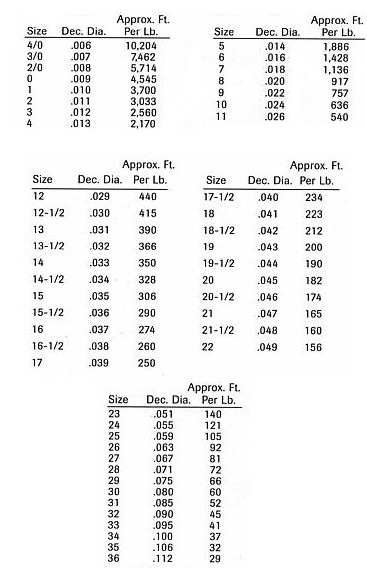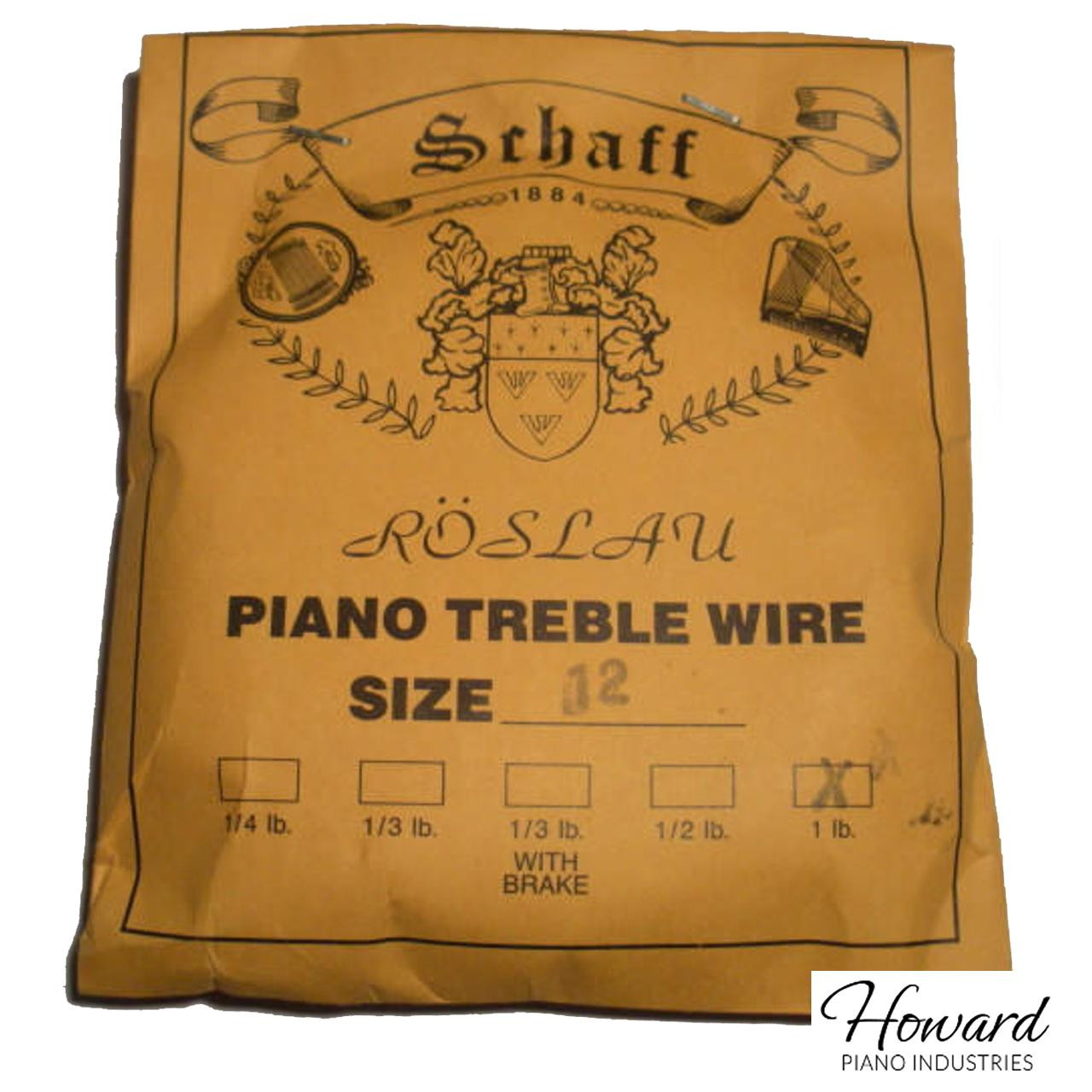The size of piano wire you need depends on the specific string you are replacing. Measure the broken string’s diameter or consult the piano manufacturer’s specifications for accurate sizing.
When selecting piano wire, understanding the type and model of your piano is crucial, as the wire size directly affects the instrument’s sound quality and playability. Piano technicians often use specialized tools such as micrometers to measure wire diameter precisely.
Replacing a piano wire involves tuning the new wire to the correct pitch, which can be a delicate process. Musicians and piano repairers typically keep a variety of wire sizes on hand, ensuring they can address the diverse range of piano makes and models. Choosing the right piano wire size ensures longevity of the repair and contributes to the overall harmony of the instrument. Remember to prioritize quality and compatibility when purchasing piano wire to maintain the integrity of your piano’s sound.
Size Matters In Piano Wires
Choosing the right piano wire is crucial. The wire size affects the instrument’s tone and playability. Each wire works together to create perfect harmony. Let’s explore how to find the perfect match for your piano.
Factors Determining Piano Wire Size
Several elements influence the correct wire size for a piano. Consider these points:
- Piano Type: Grand pianos and upright pianos use different wire sizes.
- Octave Range: Higher notes require thinner wires than lower notes.
- Brand Specifications: Follow your piano manufacturer’s guidelines.
- Tuning Stability: The appropriate gauge ensures tuning holds well.
Inspect your piano’s manual or consult a professional for the best wire size.
Impact Of Wire Size On Sound Quality
The diameter of piano wires plays a vital role in sound production. Here’s how:
| Wire Size | Tone Quality |
|---|---|
| Thinner Wires | Produce clearer, more precise notes. |
| Thicker Wires | Result in richer, fuller sounds. |
Choose wire size wisely for the desired sound quality on your piano.
Deciphering Piano Wire Gauges
Choosing the correct piano wire size can make all the difference in your instrument’s sound. Different types of pianos require different wire gauges. The term ‘gauge’ refers to the thickness of the piano wire. It’s essential for musicians and technicians to understand these numbers to ensure the perfect pitch and tone.
Understanding Wire Gauge Numbers
Wire gauge numbers are crucial in identifying the right size of piano wire. These numbers represent the thickness of the wire. Smaller numbers mean thicker wires, while larger numbers signify thinner wires. It’s important to match the right gauge to your piano’s requirements.
Common Wire Sizes For Different Piano Types
Different pianos have unique needs when it comes to wire sizes. Here’s a quick guide:
- Grand Pianos often use heavier gauges for bass strings.
- Upright Pianos may require a range of wire sizes, depending on the note.
Selecting the right wire gauge ensures that your piano sounds its best. Each piano type has a recommended wire size chart that technicians follow. Here is an example:
| Note | Upright Piano | Grand Piano |
|---|---|---|
| A0-C8 | Gauges 12-24 | Gauges 13-22 |
| C4 (Middle C) | Gauge 20 | Gauge 21 |
Always consult your piano manufacturer’s specifications or a professional technician before choosing piano wire. Correct gauge wire plays a vital role in creating beautiful music.
Customizing Wire Size For Your Instrument
Choosing the right piano wire size is crucial for optimal sound. Each piano has unique requirements. Customizing wire size ensures your instrument performs its best. The process involves careful consideration of make, model, and professional advice.
Matching Wire Size To Piano Make And Model
Finding the perfect match for piano wire size depends largely on the specific make and model of your piano. Manufacturers often provide recommendations:
- Check the piano’s manual: Look for wire specifications.
- Manufacturer websites often list details for different models.
- Contact the manufacturer if information isn’t readily available.
| Make | Model | Wire Size |
|---|---|---|
| Yamaha | C7 | 0.080″ |
| Steinway | M | 0.085″ |
Exact wire size can affect tone and durability. Ensure measurements are accurate.
When To Consult A Professional Technician
While research helps, consulting a professional piano technician is often necessary:
- To confirm the correct wire size.
- For advice on the best materials for your piano’s tone.
- If your piano is an older or uncommon model.
An experienced technician can make the replacement process smooth and precise. They ensure that your piano maintains quality sound and playability.

Credit: www.vandaking.com
Tools For Measuring Piano Wire
Choosing the correct size piano wire is crucial for the perfect tune. Various tools help measure wire with precision. These tools make the task easy and accurate. Let’s delve into the specifics of each tool.
The Role Of Micrometers
Micrometers are precision tools. They measure wire diameters accurately. Unlike rulers, micrometers provide readings down to the thousandth of an inch. They consist of a calibrated screw used for fine measurements. Musicians and technicians rely on this tool for exact wire sizing. Here’s how to use a micrometer:
- Open the micrometer’s jaws by turning the thimble.
- Place the wire between the jaws.
- Close the jaws gently until the wire is snug.
- Read the measurement on the scale.
Leveraging Digital Calipers
Digital calipers are modern tools. They offer an easy-to-read digital display. Calipers can measure both small and large wire diameters. They are versatile and user-friendly. Use steps similar to the micrometer:
- Turn on the digital caliper.
- Place the piano wire between its arms.
- Press the arms together lightly.
- Note the digital reading.
Both tools are key for selecting the right piano wire. Remember to measure twice. This ensures your piano performs at its best.
Replacing Piano Wires
Replacing piano wires is crucial for maintaining your instrument’s sound quality. Over time, wires can break or lose their tonal qualities. Keeping your piano in top shape requires proper wire replacement. The right size wire ensures superb tune and performance.
Steps For Replacing Broken Or Old Wires
Follow these steps to replace your piano wires successfully:
- Determine the correct wire size for your piano’s model.
- Order replacement wires from a reputable supplier.
- Remove the damaged wire with the right tools.
- Install the new wire, threading it carefully through the appropriate peg.
- Secure the wire and ensure it’s properly aligned with others.
- Tune the wire loosely at first to prevent snapping.
Fine-tuning After Wire Replacement
Once you’ve replaced the wire, fine-tuning is essential:
- Tighten the wire gradually, allowing it to stretch.
- Use a tuning lever and electronic tuner for the best results.
- Repeat tuning over several days to maintain tension.

Credit: www.howardpianoindustries.com
Maintaining Your Piano’s Sound
To unlock the melodious potential of any piano, understanding the intricate dance between its wires and overall care is crucial. The perfect pitch and rich tones depend on choosing the right piano wire size, but let’s not stop there. It is equally vital to know how to keep these wires in top shape. From regular tuning to precise humidity control, maintaining your piano’s sound quality is a delicate balance that ensures the longevity of its beautiful chords.
Regular Tuning And Its Effect On Wire Wear
Regular tuning is fundamental to the longevity and performance of your piano’s wires. Each session of tuning is an opportunity to catch issues before they escalate. Tuning adjustments, although slight, involve tension changes. This, over time, can lead to wire fatigue.
- Experts recommend tuning twice a year.
- Consistent tuning minimizes stress on wires.
- Prevents long-term damage from tension fluctuations.
Tuning keeps your piano sounding great and extends the life of the wires. Less wear means less frequent replacements and better sound preservation.
Proper Humidity Control For Wire Longevity
Pianos are sensitive to humidity. Too much causes swelling and pressure, too little leads to cracks and brittleness. Both extremes stress the wires, reducing their lifespan.
- Aim for 42% to 60% relative humidity in the piano room.
- Use humidifiers or dehumidifiers as needed.
- Monitor with a hygrometer for accuracy.
By keeping humidity in check, piano wires retain their elasticity and strength. This ensures a consistent, vibrant sound and avoids premature wear.
Good maintenance is not just about handling immediate issues but also about foreseeing potential ones. The right piano wire size sets the stage, but proper tuning and humidity control are the key performers in the symphony of sustaining your piano’s exquisite sound for years to come.
Frequently Asked Questions For What Size Piano Wire Do I Need
What Are The Different Sizes Of Piano Wire?
Piano wire comes in various gauges, typically ranging from 12 to 22, measured in thousandths of an inch. The size selected depends on the pitch and tone desired.
How Do You Measure Piano Wire?
To measure piano wire, use a precise caliper to gauge its diameter and a tape measure for its length. Ensure the wire is straight when measuring.
Is Piano Wire The Same As Spring Wire?
Piano wire and spring wire are not identical. Piano wire is specifically designed for musical instrument strings, while spring wire serves in creating springs, offering distinct flexibility and strength properties.
Is Piano Wire The Same As Guitar Wire?
Piano wire and guitar strings are not the same. Piano wire is thicker and made for durability, while guitar strings vary in composition and gauge for different sounds.
Conclusion
Selecting the right piano wire size is crucial for optimal sound quality and durability. As you’ve learned, the correct gauge depends on your piano’s make, model, and the specific octave you’re addressing. Always measure old strings or consult manufacturer specifications for accuracy.
Take this knowledge, find the perfect match, and let the music play on!
